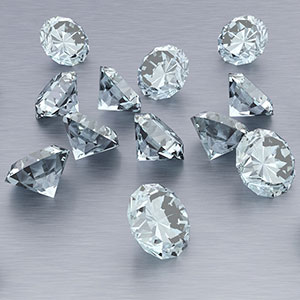
The first phase of the G7’s ban on Russian-mined diamonds is due to be enacted in less than two months, yet so far the trade has not received much guidance on what the new rules will require of them.
According to communications from the European Union, beginning March 1, any importer bringing polished diamonds 1 ct. and larger into a G7 country—including the United States—must declare that those shipments contain no Russian-mined goods.
This raises two questions: What kind of declarations will be required? And will the same rules apply to older diamonds, or stones with fuzzy provenance?
There are no clear answers yet to either question—or even unclear ones.
“We should be seeing something very soon from the U.S. government if they want this to start March 1,” says Sara Yood, deputy general counsel for the Jewelers Vigilance Committee. “For now it seems like nothing’s been finalized.”
Yood believes the required declarations will be modeled on statements developed by the World Diamond Council (WDC) for its G7 Diamond Protocol, which contains an exception for preexisting stock.
The WDC declaration says: “The rough and/or polished diamonds herein invoiced do not originate from mining companies operating in Russia, and have not been processed or produced in Russia, based on adherence to the G7 Diamond Protocol standards, unless these diamonds were purchased prior to [DATE TBD]. The seller hereby supports this declaration by adhering to the G7 Diamond Protocol assurance framework.” (That framework requires companies to segregate Russian-mined goods from the rest of their stock.)
Even if the U.S. adopts some variation of the WDC’s language, questions remain whether Customs will require any kind of backup for declarations—and how enforcement will work.
The only statement the U.S government has issued on Russian-mined diamonds came in the executive order President Biden signed in December. While that order does not mention specific dates or declarations, officials have said they want to coordinate their policies with the rest of the G7. Still, it’s possible that rules, and maybe even implementation dates, could vary from country to country.
The second phase of the G7 plan, due to take effect Sept. 1, is even more ambitious. It will require that all polished diamond imports of half a carat or bigger—as well as diamond jewelry, watches with diamonds, and lab-grown diamonds—be entered in a blockchain ledger administered by the G7.
That plan appears modeled on a framework developed by the Belgian government and will likely—at least in its early stages—route all rough destined for G7 markets through Antwerp’s diamond office. Goods mined in Canada, a G7 country, may take an alternate route.
(Photo: Getty Images)
Follow JCK on Instagram: @jckmagazineFollow JCK on Twitter: @jckmagazine
Follow JCK on Facebook: @jckmagazine





